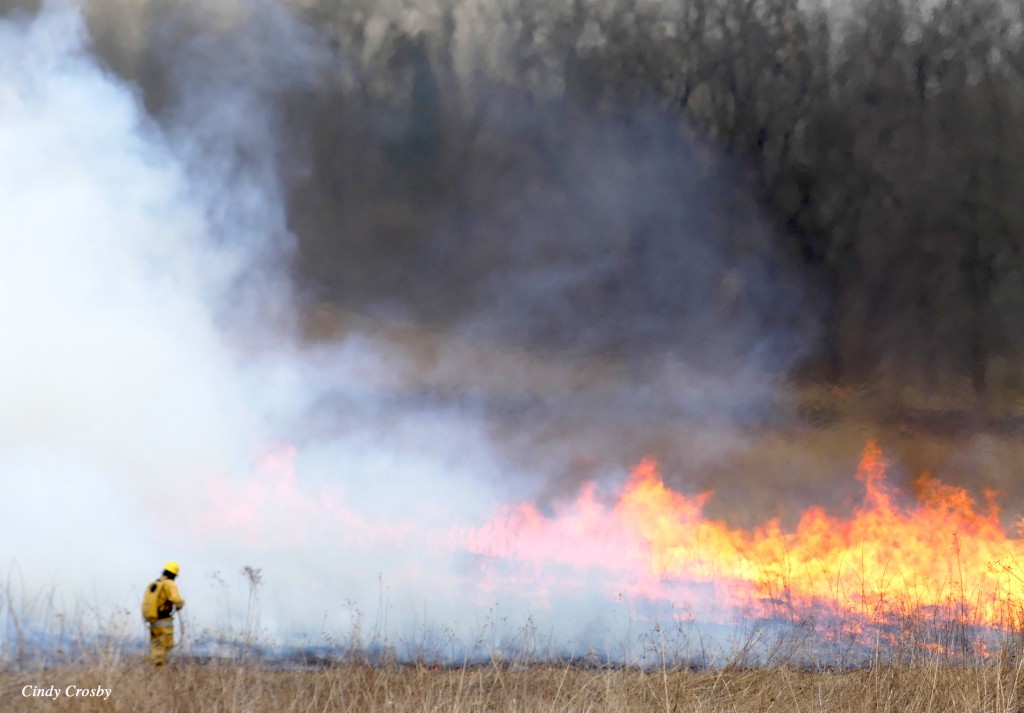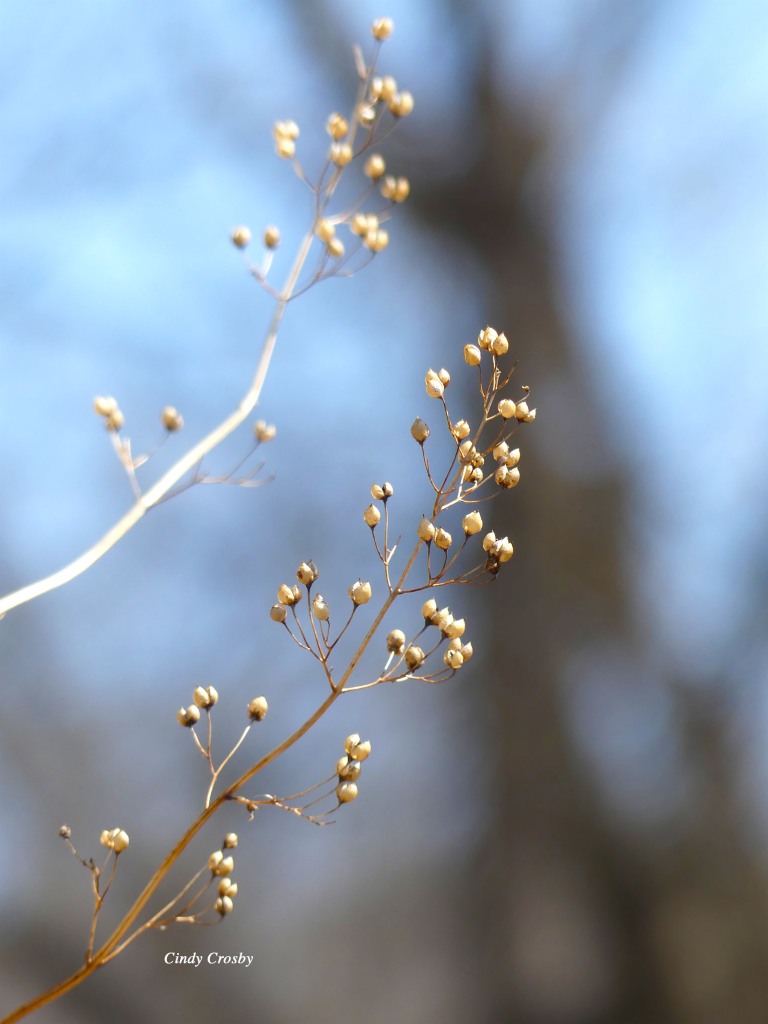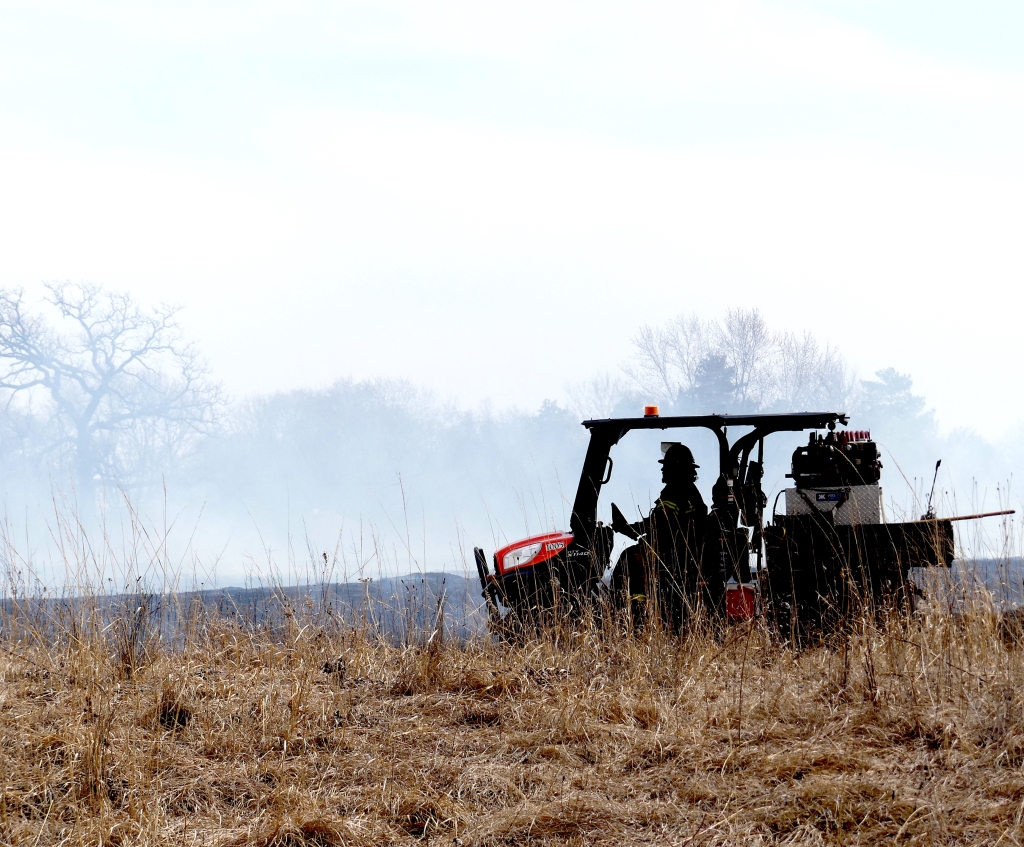By Cindy Crosby
“Fire works best in nature as it does in the lab, as a
catalyst. It interacts. It quickens, shakes, forces.” — Stephen Pyne*
It’s time.
Rising temperatures. Light winds. Rain, forecast later in the week. There’s a sense of urgency. This is the moment.
Time to burn the tallgrass prairie.
In 2020, the Covid-19 lockdown occurred during prescribed
fire season. For the first time in recent memory, the Schulenberg Prairie—like
many prairies—was left unburned.
So much was surreal about 2020; not the least was to see the prairie in its second year growth. Spring wildflowers were partially invisible under thatch and old grasses. Black walnut saplings, sumac, and gray dogwood moved in. Prairie shrubs looked, well, shrubby, without their annual fire regime. Most stunning was the prairie pasture rose, which grew taller than I’ve seen it before, with beautiful rose hips that lingered into spring.
 |
Pasture Rose (Rosa Carolina) Schulenberg
Prairie, The Morton Arboretum, Lisle, IL. |
And now, in a
matter of four hours, the last two seasons of tallgrass growth have gone up in
smoke.
A red-tailed hawk
hovers, waiting to pounce on any small mammals running ahead of the flames. How
do they know what fire will do? I wonder. Nearby, a field sparrow sings from a
wild plum tree, oblivious to the spectacle taking place. I often find hawk
feathers and other bird feathers on my hikes here; now, there will be no trace.
Only ashes and bird song.
A woman pulls her car to the side of the road; rolls down her window. “Do you know why they’re doing this?” she asks. It’s an excellent question. The short answer is this: Prescribed fire helps keep a prairie healthy. Without fire, we would lose our prairies. Fire keeps brush and trees from taking over the tallgrass and turning it to woodland.
Spring burns warm the ground. The blackened soil heats up much more quickly than unburned soil. This tells the prairie plants it’s time to grow.
Old leaf litter—dead plants—vanish in the flames, freeing up space for new growth.
Fire also helps control some weedy plants that might otherwise take over the prairie and outcompete native plants. The prescribed burns help prairie stewards maintain diversity.
I watch the hardworking women and men of the fire crew check the prairie for hikers, then lay down a waterline around each area to be burned.
The water line, back-burns, mowed pathways, and the gravel road create boundaries that help keep the fire within a contained space.
With the help of
a drip torch, different portions of the prairie are set on fire.
Up in flames go the prairie dock leaves.
Mountain mint seed heads turn to ashes.
The last
lingering seeds of carrion flower: vanished.
Late figwort
disappears into the inferno.
The last vestiges
of 2020 on the prairie are only a memory.
 |
False sunflower (Heliopsis helianthoides) Shadow Schulenberg Prairie, The Morton Arboretum, Lisle, IL. |
Fire is usually something we fear.
Today, we embrace it. Welcome it. Respect it.
Losing our prairie burn season in 2020 was only one of many losses in a year full of assorted griefs.
But with today’s
prairie fire, I feel joy.
At last. There’s hope for the season ahead.
*Stephen Pyne (1949-) is professor emeritus at Arizona State University, and the author of The Perils of Prescribed Fire from which the opening quote for this post is taken. He’s written 34 other books, most of them about fire. Listen to his Ted Talk How Fire Shapes Everything here.
*****
Cindy Crosby is a local
author based in Glen Ellyn, Illinois. Follow Cindy's wonderful blogs,
"Tuesdays in the Tallgrass," at https://cindycrosby.com/ The above was republished with permission.





















No comments:
Post a Comment